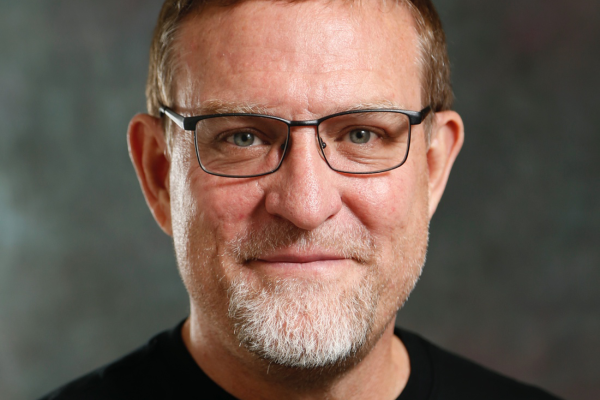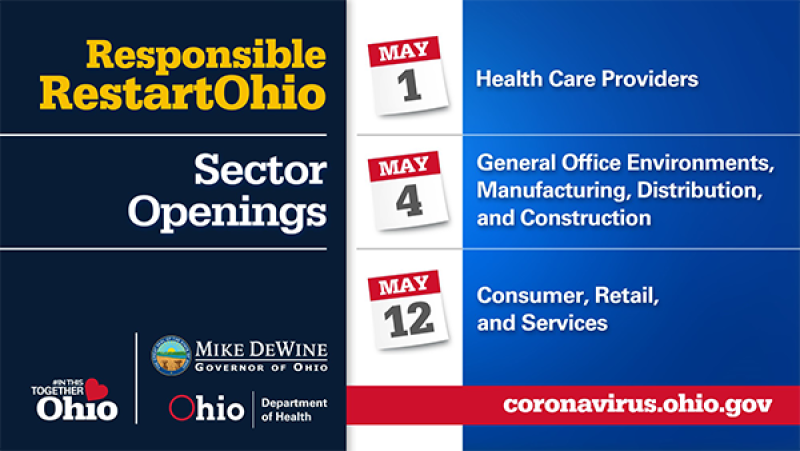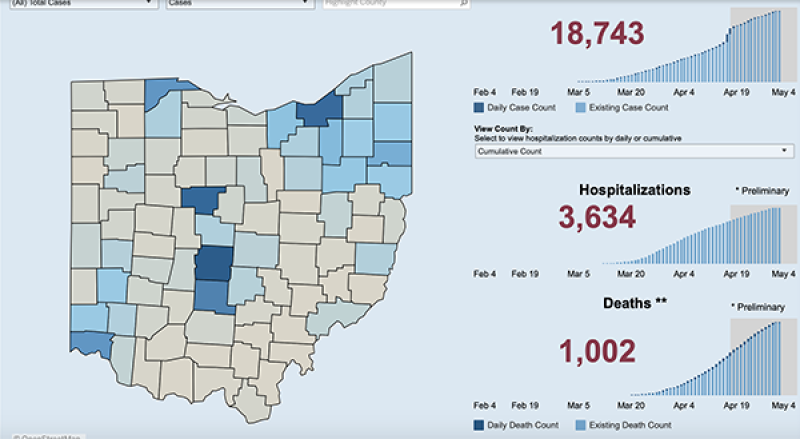Uncovering the true spread of the coronavirus in Ohio


Ohio Gov. Mike DeWine started the process of re-opening Ohio's economy May 1.
As Gov. Mike DeWine starts reopening Ohio’s economy, one essential question lingers: How widespread is the coronavirus, actually? The Ohio Department of Health’s confirmed cases are only a fraction of true spread, but because typically only the sickest are being tested, that leaves a lot of uncertainty over who’s had the virus and who hasn’t.
Up until the coronavirus emerged in Ohio, Department of Sociology Professor Samuel Clark’s epidemiology research has been in developing countries, mostly in Africa, where he studied the demographic impacts of HIV and mortality.
When the coronavirus hit Ohio, however, Clark recognized that monitoring systems across the United States were unable to track the spread of the coronavirus. After working in countries that had experience conducting proactive, regular surveys to track the status of a given disease, he wanted to help fill in the gap.
“It’s not a fault per se of the systems we have. They’re just not set up to deal with this kind of a situation, whereas the systems in some developing countries are set up to deal with exactly this kind of situation,” Clark said. “I think it’s very interesting that we are engaged in a reverse technology transfer right now.”
Now, working with Ohio State colleagues in geography and public health, Clark is pulling from the strategies he’s learned in developing countries to conduct four projects in collaboration with the Ohio Department of Health to provide a more accurate, comprehensive picture of the prevalence of the coronavirus across Ohio. The information gleaned from these efforts — some of the first of their kind — will be vital for planning how the state will reopen and monitor the situation in the coming weeks and months.
First is a study of excess deaths, or deaths that are indirectly attributed to the COVID-19 crisis. Such cases could result from domestic violence situations or from people not seeking the medical care they otherwise might have, among other scenarios.

The study will look at weekly counts of all deaths in Ohio and compare those numbers to typical death counts that have happened during the same week in previous years. By looking at the change over time and accounting for known coronavirus deaths, the team will be able to see whether the state has experienced an increase in those excess deaths since the pandemic started and how different geographic areas have been affected.
“There’s a bunch of indirect mechanisms for creating additional risk, and the excess deaths study will capture all of that,” Clark said.
The second project is a telephone survey that asks people a quick and simple set of questions about COVID-19 symptoms. This study, which will interview a sample of Ohioans on a roughly weekly basis, will help track the fraction of people in Ohio who are having a set of symptoms consistent with COVID-19. Clark says it’s imprecise, but it provides an additional measure for whether the epidemic is increasing or decreasing and how that is changing over time. It’s quick, easy and affordable.
A whole bunch of possibilities exist for how the lockdown could end, but we definitely need to know how many people are still susceptible and who they are so that we can try to protect them,” Clark said.
A similar project adapted from a World Health Organization survey will test a representative sample of 1,050 people across Ohio for the coronavirus. Based on the number of positive results, the team can estimate how many other people in the state are currently infected. Such an estimate has been unavailable so far because current work relies on samples of convenience, such as studying those who seek testing at a hospital or who are in high-risk environments. Those groups bear little relationship to what is happening within the population as a whole, he said.
“The really important thing epidemiologically is understanding how many people, or what fraction of the population, is susceptible,” Clark said. “We’d also like to know in a rough sense who they are.”
To help provide a more detailed idea of who is still at risk of getting COVID-19, the team will conduct a fourth project modelled off of the United States Agency for International Development’s demographic and health surveys. It will ask a representative sample of Ohio residents various questions about their risk profiles. It will also include two tests: an RNA “swab” test that detects the presence of the virus and a blood test that detects the presence of coronavirus-specific antibodies.
“The really important thing with this survey is … we’ll get the prevalence of the disease and the prevalence of people who have ever had the disease,” Clark said. “From that, we can calculate the number or fraction of people who are still susceptible, which is really important in terms of how the state plans on ending the lockdown.”
Along with those data, the survey will also ask about co-morbidities, social distancing behaviors, work environment, employment status, health care and other factors that would affect a person’s risk of contracting a severe case of COVID-19, as well as their ability to deal with the range of impacts associated with the pandemic.
“A whole bunch of possibilities exist for how the lockdown could end, but we definitely need to know how many people are still susceptible and who they are so that we can try to protect them,” Clark said.
By understanding the demographics and epidemiology behind the coronavirus, Clark said policymakers can more effectively implement a strategy focused on protecting as many people as possible. And by conducting ongoing research that illuminates the evolution of the spread of the coronavirus in Ohio, the state can nimbly respond to changes and adjust its policies and recommendations as needed.
